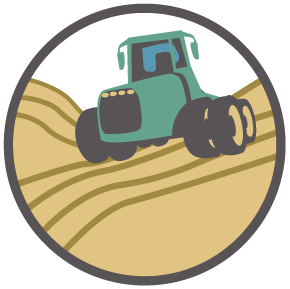BIOSOLIDS
Improve your soil, and help divert waste from landfills
Partnering with municipalities and farmers to facilitate safe and beneficial reuse of biosolids through land application, diverting this resource from landfill, reducing the need for commercial, synthetic fertilizers.
Successfully diverted more than
of biosolids
from Ontario`s landfills.
Biosolids, also known as wastewater residuals, are a nutrient-rich organic by-product of municipal wastewater treatment process. As an experienced and well-equipped supplier, Bartels Environmental Services Inc. has been awarded several multi-year contracts with a variety of municipal and regional generators to manage biosolids specifically for beneficial reuse.
We are committed to promoting program sustainability by working with local farmers to create a regional circular process, returning nutrients to the communities where they originated.
Benefits of Land Application of Biosolids

Used as a soil amendment through land application

Supplies nutrients

Infuses organic matter

Protects against erosion

Increases soil structure

Improves absorption and storage of moisture

Facilitates carbon sequestering
Quality Product:
Beneficial reuse programs depend upon quality control by the generator; extensive treatment processes, strict standards, and quality controls are in place aimed to stabilize organic matter, reduce disease-causing organisms and ensure the safety of biosolids application.
Classified as Non-Agricultural Source Material (NASM), biosolids are highly regulated, including the Nutrient Management Act / Ontario Regulation 267/03. Application done in accordance with Nutrient Management Act (NMA). https://www.ontario.ca/laws/statute/02n04
BESI's certified NASM Plan developers hold valid NASM Plan Development Certificates issued by the Ministry of Agriculture, Food and Rural Affairs (OMAFRA).
Suitable Crops:









Our team is focused on providing the very best nutrient management plan for each farmer to maximize yield, while maintaining crucial land application practices to ensure environmental safety. They work closely with OMAFRA to develop and maintain a NASM plan for each farmer considering soil requirements, timing, rates of application, and setback distances.

